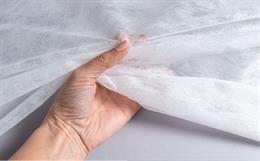Travel makes a person wiser. This is true in my case, whichenables me to gain global perspective and share my observations with theoutside world on issues that are of interest to the textile and manufacturingsectors. The long air travels from the US to India, which I do frequently thesedays is a delight for me as these give me opportunities to pick up globalnewspapers such as Wall Street Journal, London Times, Gulf News, StraightTimes, etc. and gather textile industry related global news. Such a broad basednews gathering is important to have a good understanding of whats happeningaround the world, which is particularly critical when the global economy is ina slump, as it has a direct impact on the Indian textile industry and theeconomic health of the country. You may wonder why do I use some space in thisarticle to explain about usefulness of the banal global travel, which hasbecome common place these days? Although my recent air travel in April wasuneventful, it was such a delight as I could get hold of nearly dozen of magazines and papers during my air trip all for free-thanks to Emirates airlines. What acoincidence, there were many reports that are pertinent to global and Indiantextile industry. How lucky am I to gather relevant information, all pro bonoand use them for this column. Actually, I started penning this column on myreturn 16 hour non-stop flight from Dubai to Houston with news input fromlatest issues of Time, Forbes, etc. while listening to soothing Africanclassics mix. What a luxury! This article carries real hot juice of globaleconomy and my fresh observations from my recent India trip based on my manyinteractions with textile and cotton industry people during my latest 10 daytrip to India. Believe me, those interactions, the new world order and theeconomy assure me that the future of the Indian industry is in diversificationwith value-addition across its entire supply chain. So if possible, tune on tosome good music and ride with me in the following sections where I ramble aboutthe future of the Indian textile industry.
Indian Textile Industry: Quo Vadis?
One of the worlds most popular weekly magazines, Time in its April 27th issue beams its cover with a troubling article "GoingHome." The cover article in the Time which catches the attention ofmany in the world talks about the job losses and the plight of the migrantworkers who are returning back to their native lands creating major shifts andproblems in the economic order. These migrant workers from remote places tourban cities are the indices of manufacturing, growth and productivity. Thelatest Time article depicts a reverse trend showing manufacturing decline andeconomic downtown. What does the reverse migration indicate? Export orientedeconomies, which are dependent on the consumer buying power are subjected tothe fluctuations in their home economy can quickly cause economic havocs inexporting countries resulting in huge job losses. In the case of textiles, theexporting countries are over populated developing nations, where the livelihoodof several million migrant workers is dependent on the export. The countriesthat are predominantly affected are China, India, Bangladesh and Vietnam. As the economy swings up and down in cycles, it is not certain that the world economywill be strong in the next decade as it was before. If there is a recessionwave again, developing world will be hit hard again. Such economic tsunamiswill collapse the economic stability and will put the developing nations in a reversepath towards growth. What is the long term solution? The panacea for such arecurring complexity is to grow the three sectors of the economy: 1)Agriculture, 2) Manufacturing and 3) Service. The lack of the manufacturingsectors growth in developed economies, especially in the US and UK over the last two decades is one of the reasons for the economic downtown the world iswitnessing today. As the textile industry provides bread and butter to manymillions in India, it is deeply woven into the fabric of the Indian economy andefforts are needed to create a platform of stability and growth. How can weachieve this? There will be a demand for commodity goods, but competition willbe fierce from low-wage countries. Time is ripe in India to expand its textilesproduct basket and develop indigenous base in technical textiles that can caterto both the growing domestic and export markets.
Immediate Actions Necessary by the Indian Textile Industry
As delineated above, in the ever changing nature of theworld, both politically and economically, it will be difficult for nations tobe competitive just based on price alone. Two other factors that need immediateattention are: 1) Scale and 2) Functionality (or value-addition). In this harsheconomic situation with credit crunch and low consumer confidence, it isextremely difficult and may even sound irrational to think of huge investments.Majority of economic forecasts indicate that growth will happen during the 3rdand 4th quarters of 2010 and big recovery will start happening in 2011.This gives two-year window for the Indian manufacturing and textile sectors torebound.
In any case, it is visionary and of course a necessity for the Indian textile industry to diversify and think beyond commodity products. There are several timely factors that warrant the diversification of the commodity Indian textile industry. Most notable of the factors is the erosion of the competitive advantage the Indian industry had, i.e., cheap labour. A casual chat with an Indian textile industry leader recently made me understand that skilled labour is in an acute shortfall in India. More importantly, labour is not cheap anymore. An unskilled raw hand costs approximately Rupees 250. The unavailability of skilled labour coupled with acute power shortage in Tamilnadu which has one of the largest spinning capacity in India is enforcing enormous stress on the commodity textile sectors such as spinning to stay afloat let alone make profits. To aggravate this situation, the minimum support price (MSP) for cotton has risen as high as 45 percentage, which is good and bad depending on whom you support. These domestic scenarios coupled with global economic downfall should force all the stakeholders of the Indian textile industry such as the textile manufacturing sector, government, traders and marketing bodies to have a discussion and chart out a coherent plan to take the Indian textile industry to the next phase. What is the next phase of the Indian textile sector? The next phase of the Indian textile industry is to develop an industry that will not only depend heavily on export market, but also will cater to domestic market. More importantly, the development of a manufacturing base which will develop much needed life-style enhancing products such as diapers, feminine hygiene and healthcare products, etc. which will be consumed by average consumers is the need of the hour.
What should the Indian Textile Industry Do?
Some of the action items necessary for transitioning to the next phase are:
- To effectively put to good use the theoretical and technical knowledge that have been widely dispersed throughout India in recent past and turn them into viable projects. The knowledge on nonwovens and technical textiles has been widely prevalent in India for over two decades. Good research has been carried out in the Indian Institute of Technology-New Delhi, The Silk and Art Silk Mills Research Association, Mumbai and Bombay Textile Research Association. Most recently, momentum has been gained due to the annual technical conference and nonwovens training workshop conducted by Lubbock, USA based Texas Tech University. Since 2004, the USA based Texas Tech University has been organizing international conference on Advances in Textiles, Machinery, Nonwovens and Technical Textiles-ATNT. ATNT conference has now received global recognition and has received support from global associates such as the Association of the Nonwoven Fabrics Industry, USA, Industrial Fabrics Association, Inc. and the Technical Association of the Pulp and Paper Industry, USA. This ATNT conference has brought enormous visibility for India. The theoretical and technical know-how and the visibility of India as the next global platform for technical textiles industry should translate into projects that can manufacture marketable products.
- There is a need for a platform to advise on marketing and investments. As delineated above, there have been enough conferences and workshops, which have basically shared necessary technical know-how on the processes and products. Time is ripe now to educate entrepreneurs and interested parties on investment opportunities and how and where to market. This is the next stage and an important step in the growth of technical textiles in India. Here again, the USA based Texas Tech University is taking a lead and will offer a unique program that will focus on technology and marketing aspects. This first-of-its-kind activity is supported by USA based Association of the Nonwoven Fabrics Industry, SVPITM, Coimbatore and The Southern India Mills Association. Bangalore based Technitex Nonwovens; Ltd. will coordinate this maiden event and will be carried out this July from 3-4 in Coimbatore.
- The development of technical textiles converting sector is a must. The best way to grow the technical textiles sector is to use "backward integration" approach, which has served the textile sector well in India. Immediate thrust should be to grow the converting sector, i.e., the end-use product making sector of technical textiles sector. Converting sector needs relatively less investment compared to rollgoods producers. There needs to have dedicated seminars, which will educate entrepreneurs on how to develop diapers, hygiene products and active wears, etc. Such dedicated value-addition programs have not been undertaken heretofore and is the need of the hour. The growth of converting sectors will help SMEs, which is necessary for the economic growth.
- Innovation is a must. As SMEs by themselves may not have necessary and adequate resources to develop technical textiles products, the Centers of Excellence created with the support of the Government of India should take proactive measures and inform entrepreneurs and all stake holders about their R&D activities and other developments that are taking place globally. At least once in each quarter, open houses have to be organized to create networking and knowledge exchange platforms.
Next Phase is a Must
As President Obama enters his 100 days in office, unemployment rate is as high as 8.5 % in the US. Consumer confidence is low as reflected in a recent survey where once essential items such as dishwashers, microwaves are no longer "must buy" products. Why are these aforementioned facts important? It is because consumers are important for the textile industry. It will take two more years for the recession to rebound so that people can flock Starbucks for a four dollar Cafe Latte. Even after the economy rebounds, competition from low-wage countries will deter exports from India, which India enjoyed with relish in the early 2000s. Therefore, it is a must for India to develop a nimble next-generation technical textiles industry. How to go about this? Developing the converting sector with a strong R&D support sector to help entrepreneurs to develop products that are of need in a short timeframe is the first step in the long road towards progress in technical textiles industry. To reassure the importance of growing the next phase of the Indian textiles industry, i.e., technical textiles, let us look nowhere else than the time that will take the economy to upswing. It will be at least the end of 2010. It is not my prediction. Guess who said this? In the famed television newscast program, CBS 60 Minutes, US Vice President Joe Biden to question on why unemployment will be high till 2010 by Lesley Stahl answered "it took long time to get here and it will take some to recover." These words clearly indicate that consumer markets are changing and the Indian textiles sector should adapt fast.
The information expressed are personal views of the author. Here 'I' refers to him.
The article was originally published in Textile Review, May 2009
About the Author
The author is associated with Nonwovens & Advanced Materials Laboratory, Texas Tech University, Lubbock, Texas, USA.








